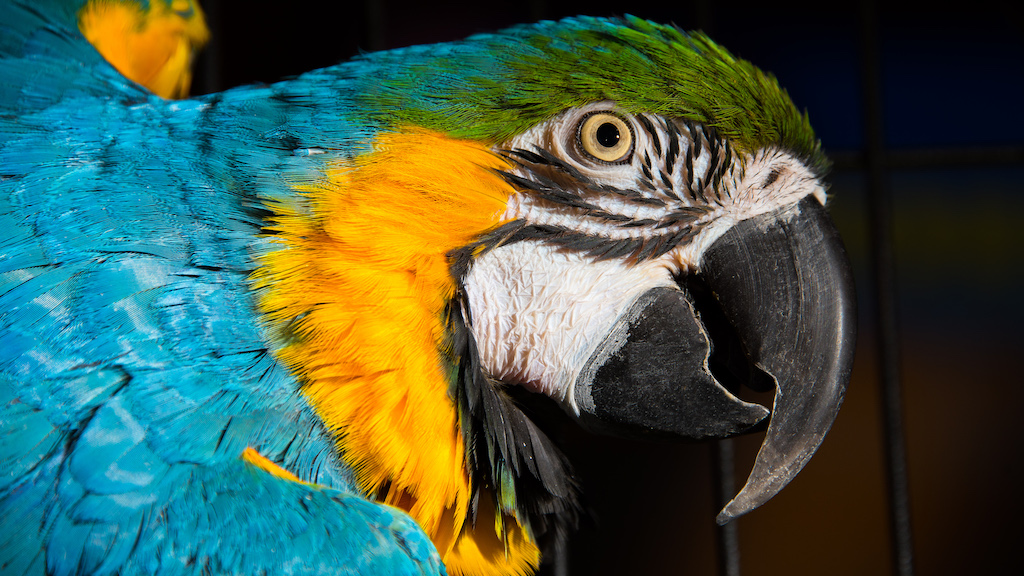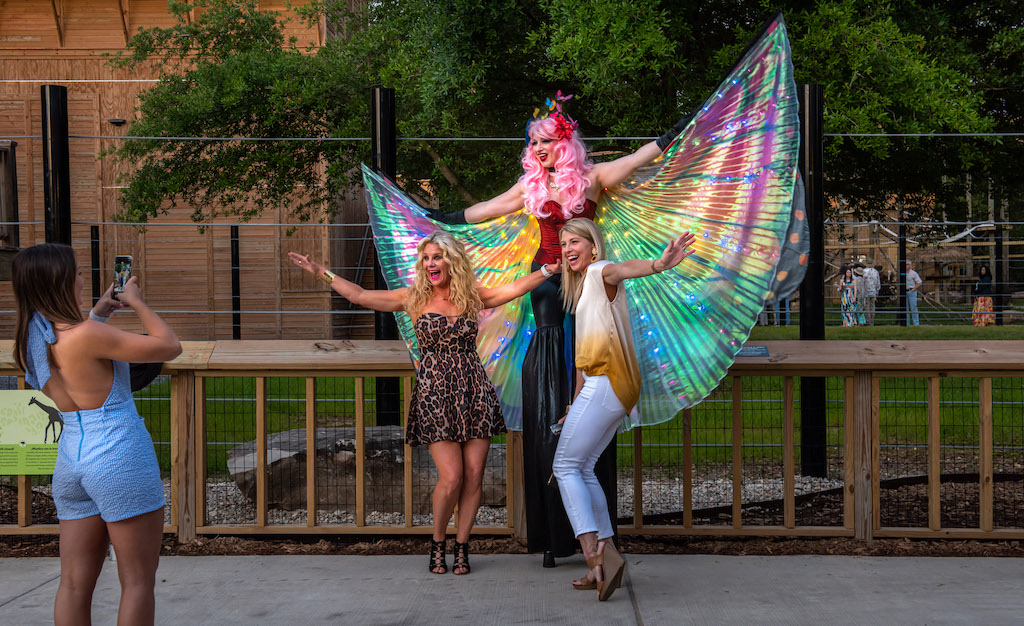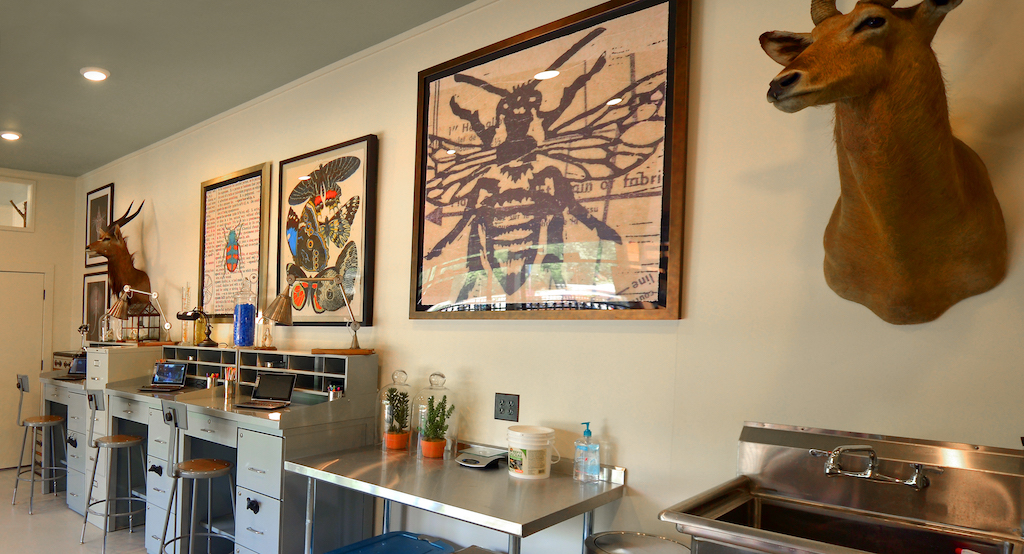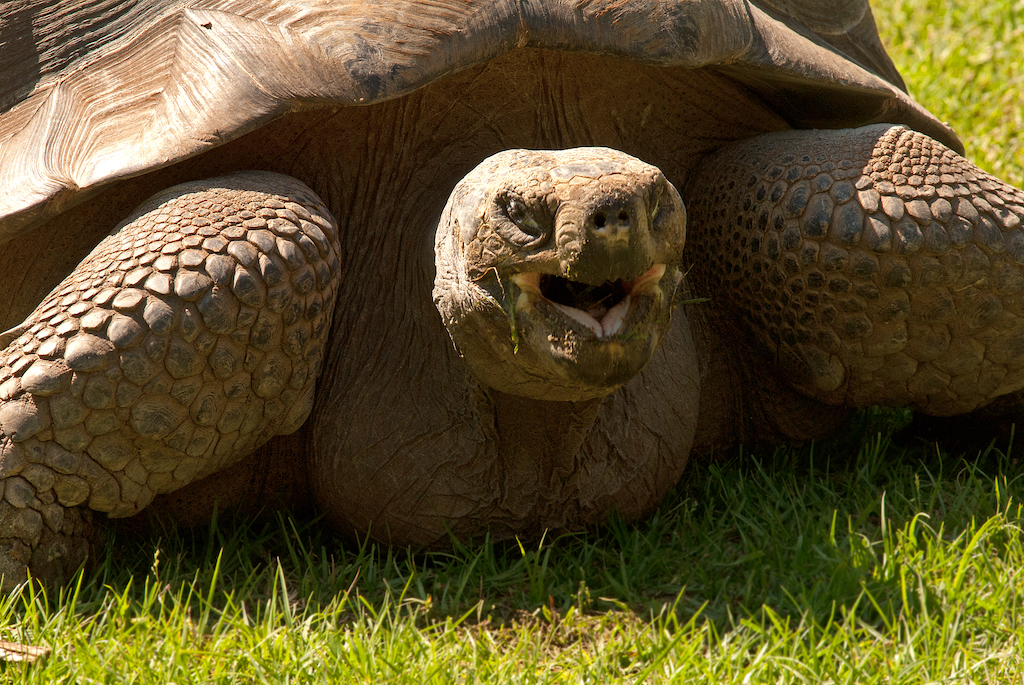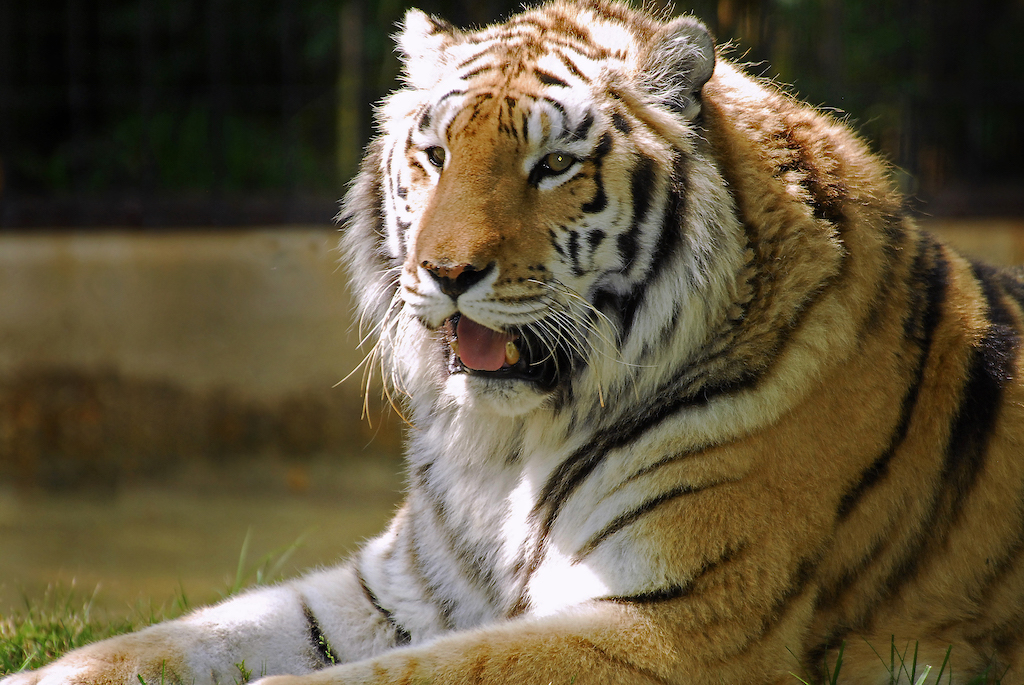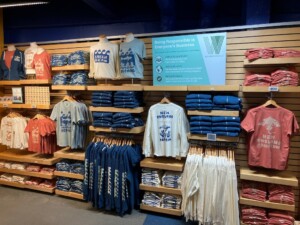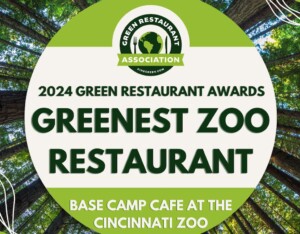Hattiesburg Zoo in Hattiesburg, Mississippi, is expanding to offer the new Serengeti Springs water park, a 3.5-acre attraction with a lazy river, a water play structure, and slides.
Serengeti Springs will be part of the zoo’s Africa section. The first phase of the project includes a water play structure and a 150,000-gallon lazy river, as well as a pool with a swim-up bar, cabanas and food trucks. The $10.5 million expansion will also feature an entry building with a gift shop, changing rooms and showers, in addition to loungers and other amenities.
The water play structure, a WhiteWater Fusion Fortress, takes inspiration from the animals of Africa. It will boast nine slides, multiple play areas, two bucket dump stations, spray toys, and the ‘Serengeti Swirl’.
The first phase of construction is scheduled to open in September 2023. The second phase of Serengeti Springs will begin between 2025 and 2027. This will include a slide tower with four slides.
The water used for Serengeti Springs will be captured, treated and recycled.
The origins of Hattiesburg Zoo
Rick Taylor is the executive director of the Hattiesburg Convention Commission. He spoke to blooloop about the extraordinary zoo, its history, mission, and plans
“The Hattiesburg Zoo opened on Easter Sunday, 1950. It was in what was at that time, and actually, still is, a kind of decentralised park for the city. It was 40 acres of land, donated in 1902 by a businessman, on the outskirts of town. By the fifties, it was in the centre of town. Now, it’s a little bit to the east of the main population centre of Hattiesburg.
“The zoo was created because all the kids that lived in and around would bring animals they found. A baby squirrel might have fallen out of a tree after a storm. Or, they might find a turtle or another animal, and bring it to the park. In the late forties, the city began to have a little bit of a menagerie of native animals that had ended up at the park and needed a little care. So, they decided to go ahead and build a zoo.”
At this point, the Lions Club of the time decided to help:
“They funded the acquisition of a lion, and that was the kickoff to the Hattiesburg Zoo.”
The zoo evolves
From its opening in 1950, the zoo has, Taylor explains, had a varied history:
“Zoo standards have changed, as have the expectations of the public. Better animal management has developed. I grew up here, and I remember visiting in the late sixties and seventies and seeing animals in barred squares on concrete. There was a lion, a tiger, a bear, and an Indian elephant called Hattie that was retiring from the Ringling Bros. and Barnum & Bailey. It served our community well with the knowledge that the animal caregivers possessed at that time.”
However, he adds:
“As expectations and requirements changed, it became challenging, over the years, for a small city to be able to sustain a zoo in a modern era.”
At this point, the city ran the zoo.
“In 2009, the then mayor, Johnny DuPree, asked me if the Convention Commission had any interest in managing and operating the zoo. At at the time they were subsidising the zoo 1.2 million US dollars. They did not feel that they could sustain that subsidy with the other expenses of operating the city.”
New management
Hattiesburg Zoo wasn’t really growing, at this time:
“It had moments where it would take a surge, then it would plateau, and standards would shift. It was difficult to get the resources to maintain it.
“My director of engineering and I spent around six months effectively secret shopping the zoo, visiting and taking a look to try to evaluate and see what we could do. We looked at some of the financial records and determined that the Commission would be interested in taking a shot at it. This was late 2009; it came to fruition very early in 2010.”
Previously, the Commission had built and operated – and continues to operate – a convention centre. It also runs a visitors’ centre, and several museums, as well as renovating and operating a historic theatre.
Taylor says:
“We got together with the Board and the City, and explained that we couldn’t risk damaging the Commission by all of a sudden saddling it with over 1.2 million in expense in a given year.”
Instead, they negotiated a deal with the City:
“We all agreed that we were not going to harm the Commission for the sake of the zoo, which had its own issues, but we knew the City needed to reduce its expenditure.”
Making changes at Hattiesburg Zoo
The outcome was a five-year contract:
“Our deal was that we would start immediately, with the subsidy reduced by 10% per year. Over a five-year span, they would see benefits, but we wouldn’t be saddled with the full amount immediately.
“So we got involved, and dug into it, beginning to make some operational changes. Our focus was on care and the upkeep of the environment, and, importantly, on creating a dynamic and compelling customer experience. After two years, we had cut the subsidy in half. The subsidies on the front end are always easy. It’s the last part when it gets hard.”
At this point, after two years, they went back to the City:
“We said, ‘We’ve got a good running start on it, and, as much as we’d like to keep getting your money, we’re willing to stop receiving a subsidy from you for the zoo.’ They didn’t turn us down, of course; they’d already figured out how they would utilise those funds differently.
“As I said, we had done the easy thing. We had chipped away at things that were overt.”
Finding savings
Covering the second half of the subsidy was much more difficult:
“We had to get right into how we were operating, how we were earning revenue, and what our expenses were,” he explains.
The team made interesting discoveries as part of that process. He gives an example:
“We are about 60 miles north of the Gulf of Mexico. There is a bird rehabilitation facility down there that periodically would give Hattiesburg Zoo pelicans and other birds that had been injured and couldn’t go back out into the wild population, and we would take care of them. We have several lakes within the zoo, so would put them in that area.”
“One of the things we discovered along the way was that the pelicans were being fed herring from the Pacific Northwest of the U.S. We tracked that back. Here we are, in the east-central portion of the U.S. The fish were being caught off Alaska and Washington state, far to the northwest, flown to New Jersey where they were then packaged, then sold to us and flown to Hattiesburg.
“Why were these pelicans being fed this exotic cuisine flown halfway across the US when they used to eat mullet out in the middle of the Gulf?”
Clearly, this was an area where the zoo could make savings.
“We talked to our animal care folks. What was funny was that when we changed their diet, the pelicans protested. They didn’t want the mullet, they preferred the herring, and it took them about a week before they got sufficiently hungry to agree to eat what they used to eat in the wild. They’d become accustomed to the good life!”
Reaching a wider demographic
This was one of numerous areas they found where costs weren’t being considered.
Taylor comments:
“One of the reasons that we declined the subsidy after two years is that I wanted the pressure of not being subsidised by the City to be on all of our staff. I wanted everyone to feel that this is us: we’re not subsidized by the city, we have to be responsible for our costs, and revenue.
“One of the things we started looking at as a zoo was who constituted our regular market. That was, essentially, children aged 2 to 12, and the people who drove them there.”
Accordingly:
“We took some steps to make Hattiesburg Zoo more attractive to those kids, but we also recognised that the length of stay was only as long as the time the adults would allocate. Here in Mississippi, it’s hot and it’s humid. We began to address, throughout the zoo, how we could cool off the kids, and cool off the adults, and how we could appeal to the adults. We did several things that the city couldn’t do, but that we, as a quasi-governmental agency, could.”
Engaging with adults at Hattiesburg Zoo
Having identified the zoo’s core visitorship, the leadership team addressed how to reach beyond it:
“Who was not coming, and how could we bring them to the zoo? In our part of the country, zoos are, largely, viewed favourably. People often associate them with childhood memories. So, we started having nighttime tacos and tequila events at the zoo aimed at the post-graduate, post-collegiate demographic without children, because we knew they were not coming to the zoo – they had no reason to do so.”
Targeting this broader market was successful:
“We began to bring in additional revenue. It actually took off and did very well. We run four or five of these events a year now, and they sell out quickly.”
On the 50th anniversary of Woodstock, the zoo held an event called Zoostock:
“All of the elements that we had created for the kids to cool them off began to come into play. We discovered that, after a few beverages, adults enjoyed playing in the splashpad that we had put in for the kids. We bought a foam machine and sprayed it into the splashpad, which people loved.
“A series of these events really kickstarted our ability to earn revenue that we would not otherwise have reached, tying into positive childhood memories.”
Breaking even and continuing to expand
“The investment meant it took us a little longer to break even. But in May of 2017, for the first time in the zoo’s history, it began to operate in the black, which was very exciting for us.”
Since then, in fact, he adds:
“It has become our largest source of earned income amongst all of our properties. Throughout that process, we expanded the zoo. We’ve added a lot of new elements.”
One is the Asbury Discovery Centre, an education facility funded by the Asbury Foundation.
He explains:
“The Asbury Foundation is a foundation from a hospital that focuses on education for children. We were able to have a little fun with the Discovery Centre. We created a kind of Victorian steam-powered, steampunk-inspired, early 1920s exploration-type environment with a lot of gears. That became a classroom.
“When we took on the zoo, part of what we discovered was that we had quite a collection of ambassador animals. They went out to schools and that sort of thing. They have to be kept separate from the other animals of their type, or they learn habits that stop them from being nice to little kids. We had quite a lot of animals that lived behind the scenes, not on display.
“Part of setting up the Ahbury Discovery Centre was the creation of an education space. The number one question of little children coming to the zoo was, ‘Where are the snakes?’ All of our snakes were ambassador animals, so they were hidden away.
“The Discovery Centre is a U-shaped building. We put a large plate-glass window on one side of the steampunk lab so you can see through to where the ambassador animals – mostly snakes and lizards, a few birds and some cotton-top tamarins and a sloth or two – live.”
Ambassador animals at Hattiesburg Zoo
Another animal which could only previously be seen sometimes was a Galapagos tortoise:
“He’s huge. His name is Craig, and he’s got quite a personality,” Taylor says:
“Even though it’s warm here, in winter, it’s too cold for him to be out on display. He would spend his winters sitting on a heating pad in his holding. What we did was to create a new winter holding for him in the Asbury Discovery Centre with a large plate glass window. He goes inside in the winter, he’s warm, but people can still see him.”
The public greeted the zoo’s growth with enthusiasm.
“It meant people like the Asbury Foundation wanted to get involved and engaged in participating in the zoo,” Taylor says. “They funded the Asbury Discovery Centre in its entirety, which really helped.
“We have 12 acres and had occupied all 12 acres, at this point. In 2021 we opened the last little section that had not been developed. That was our expansion of the Africa area. We added hyaenas, giraffes, colobus monkeys, and De Brazza’s monkeys. We also put in a large event pavilion and another restaurant to serve our expanding customer base.”
Serengeti Springs
Community excitement about the zoo’s development led to its expansion in other areas of Kamper Park, where it is located. For instance, it has expanded onto more land in order to put in Serengeti Springs, the new water park.
He explains:
“With our growth not only at the zoo but overall – we have added three museums that are in various stages of development – we have to look at meaningful revenue streams. About four years back, we added an RCI high ropes adventure course. Within two and a half years, it had paid itself off. Now, it is contributing financially in a very meaningful way.”
“So, we looked at the waterfront. What started the conversation was the fact the splashpad was so popular, and brought so many kids in that they couldn’t move around. They literally could only stand in the jets of water because of the crowds.”
Initially, the idea was to as add another splashpad:
“Then we realised that if we added a new splashpad with new toys, we’d just be moving the problem. That morphed over time into an analysis of what it would mean to build a real water park. Running those numbers, we realised this would be far more meaningful to the long term of the Commission and its activities throughout the community, and certainly to the zoo and its future growth. So, we began that process.
“We planned the waterpark as a WhiteWater FusionFortress. Phase two would be a Lazy River, and then phase three would be some really high slides for the older kids.”
Working with experts
However, the plan changed slightly:
“Our consultant pointed out that, just like the zoo, these kids would only stay for as long as their parents or guardians could tolerate the heat. Their recommendation was to put the Lazy River in as a place for the adults to be from the start, and, while we were doing it, to add a swim-up bar, because if they were more relaxed, they would stay longer, and spend more money. Phase one and phase two became one phase.
“That’s what we’re on the latter end of constructing: the FusionFortress, Lazy River and swim-up bar. We anticipate it will probably be September before we really get it open, but we’re excited about it. We think it’s going to be a great addition to sustaining and helping us to grow our zoo.”
“Later, where possible, we will integrate some African birds and fowl, and will bring animals over periodically, for events.”
Martin Aquatic Design & Engineering, a world-class aquatic firm, served as the aquatic consultant and conceptual designer for the project. The firm went through several iterations of the masterplan before settling on the final design, which includes plans for a future phase.
Martin Aquatic worked alongside the team at WhiteWater, a leading waterpark manufacturer, to design the colours and slide paths of all the attractions as well as lay out the colourful Life Floor pattern underneath the play structure known as TreeTop Trek. Once the design was approved, the team provided all hydraulic, structural, filtration, and chemical system design and engineering services.
Hattiesburg Convention Commission
Adding some insights on the Commission, Taylor says:
“The Convention Center was the flagship. It was the first thing we built, and it was controversial. There was a vocal section of the public asking, ‘Why would anybody come here?’ This was in the mid-nineties. Their only reference point at that time was the Morial Convention Center in New Orleans, about two hours south of us.
“That convention centre is a mile long, so it’s huge. It’s the third-largest convention centre in the United States, so their feeling was, ‘There is no way we need this.’ We knew we had a lot of education to do with the public. In the late 1990s, we opened it.”
The Convention Center proved to be successful:
“It brought in the market we wanted. That was association meetings and conventions from across our state and the two adjacent states. But we realise a lot of people, especially retirees who don’t have a reason to come to the conventions, don’t connect with it.”
Performing arts, museums and more
The performing arts theatre reaches a different audience:
“It’s a historic theatre from 1929 which we renovated and have made into a performing arts space for the people that are into the arts in the community. They love it. But if you don’t, that’s not your interest, or you don’t connect with that as much, we have the museums. These are primarily historic museums. If they don’t cover a part of history you have an interest in, you may not connect with them.”
“When we were talking about taking on Hattiesburg Zoo, we had a conversation with the board, and we said: ‘We’ve got this constituency here, and this constituency here, and this constituency here, but they don’t often support each other. They like what they’re interested in, but they’re not so interested in what other people are keen on. We have these pockets of supporters, but also pockets of detractors.’
“So we said, ‘The great thing about taking on the zoo is the zoo is about animals and kids. Everyone like animals and kids.’
“It proved to be true. Everyone could get behind the support of the zoo.”
Building on support for Hattiesburg Zoo
He describes some of the ways the zoo has, under the Commission’s leadership, built on that initial support:
“We have a very substantial education and outreach program. In fact, all of our outreach within a 50-mile radius is free. We will go to any school, and bring animals. We will do a core curriculum-approved presentation. There is only one requirement, and that is you must allow us to give every child a buy-one-get-one-free ticket. That means that they are going to go home and tell their siblings and their parents about the animals they’ve seen, and then they are going to want to come to the zoo.”
One of the most popular of the outreach animals, he explains, is a porcupine:
“He’s quite lovable. He looks dangerous, but he is really a friendly little guy. The kids will tell their parents about him, and explain they have this ticket that lets them get in free. But, of course, the rest of the family has to pay. It’s a great marketing program.
“Then we have overnight programs throughout the year where kids come and they camp out. Typically, they are Boy or Girl Scouts, or it may be some youth program. They will come after hours, go on a nighttime visit through the zoo, have a great education program, have dinner, spend the night, get up the next morning, have breakfast, and then they’re gone before we open for the day.”
Conservation initiatives
Taylor’s focus is on the financial aspects. He comments:
“I knew when we took the zoo on that it had to pay for itself, or we were going to have challenges. Our management staff understand that, but they’re largely from the zoo industry, so, to them, the education and conservation elements are critical.”
Accordingly, he explains:
“We looked at animals that we have taken in, or that we have built habitats for, from the perspective of whether we could have a role in conservation with these animals. How could we do our part, with an animal that, at the same time, really pulls people in?
“We have a couple of jaguars from Central and South America. Through that, we have a conservation program that supports a jaguar reserve in Belize. We have a giant anteater from Brazil. In Brazil, a big issue is that anteaters get hit on the roadways. So, there is an effort to try to educate drivers and to create overpasses and things like that, to help the animals cross the highway. We participate in that.”
Finding a balance
Two years ago, Hattiesburg Zoo also opened a giraffe exhibit and now has involvement with giraffe conservation in Africa.:
“We wanted to make conservation tangible to our market. The chances of people from Hattiesburg going on safari in Africa are relatively small.”
“Most of them aren’t going to go to South America and see anteaters in the wild. But this makes it real. It ties to actions they can take. The Amazon rainforest becomes real. If it’s being cut and made into pastureland, now they know that that’s jaguars’ home turf, and as it gets smaller, that beautiful animal’s population has nowhere to live.
“This has helped us balance those two aspects of conservation and revenue.”
Breeding at Hattiesburg Zoo
When the Commission took over responsibility for Hattiesburg Zoo, many of the animals were in the later stages of life:
“Over the years, as a geriatric zoo, we haven’t had the space to do breeding,” Taylor explains. “We are involved with the AZA species survival program (SSP). We had two wonderful Sumatran tigers, who were brothers, which is rare. Often, two males won’t get on, but ours did. Then, three years in, as part of the SSP, we had traded them to Dallas and got a tiger, who was beloved, but older.
“When we got involved with the giraffes and hyaenas, we built their habitats specifically to be able to do breeding and to be a part of any breeding programs, because we wanted to break out of that mould we felt we had slipped into, which was as a rest home for animals.”
He adds:
“There was a hyaena [named Niru] that had just been brought to New Jersey from Spain. He had not clicked with the pack and was having some difficulties. But he was critically important, as a new bloodline for the system in North America, so they sent him to us. A female [named Pili] came about a year later, and they now have a cub [named Kito], and she is expecting another, so we’re excited to now be a part of that.”
Concerning the giraffes, he adds:
“Our giraffe exhibit and barn were built for the purpose of being able to accommodate breeding. We have two giraffes at this point; a mother and a daughter. Our goal is to bring in a male. We have built it with the capacity to go to six giraffes. That is part of our growth.”
The guest experience is everything
When they took on Hattiesburg Zoo, visitation was at 23,00:
“We are currently at over 240,000 now,” he says. “To use a really bad, animal-related pun, we feel we’ve got the tiger by the tail. We can’t slip back. That customer experience has to be everything, from the way we maintain the property, to the food we offer, to the way we interact with our guests.”
“When you’re in the yard working, and guests walk by, you have to interact with them. You can’t just go on, because they wish they were beyond that barrier with you, able to interact with certain animals. So, now you have an education opportunity, and you have a one-on-one connection. We have worked on that now for over 10 years.
“As keepers, you are the star as far as the humans go here at the zoo. We have had some great experiences with that.”
Building on this, he adds:
“One thing we do is pick somebody out of the blue and then let them walk behind the scenes with you if it’s a safe space. If you’re cleaning the porcupine holding, take somebody back and show it to them. It’s just a barn, but to them, it’s the space nobody gets to go to. We do it randomly; we do it periodically. Now, in the age of social media, what these people will do is to share their individual experiences, and tell others. That’s the third-party endorsement that pushes people to us.
“It’s part of a philosophy that we have of really trying to connect with people.”



